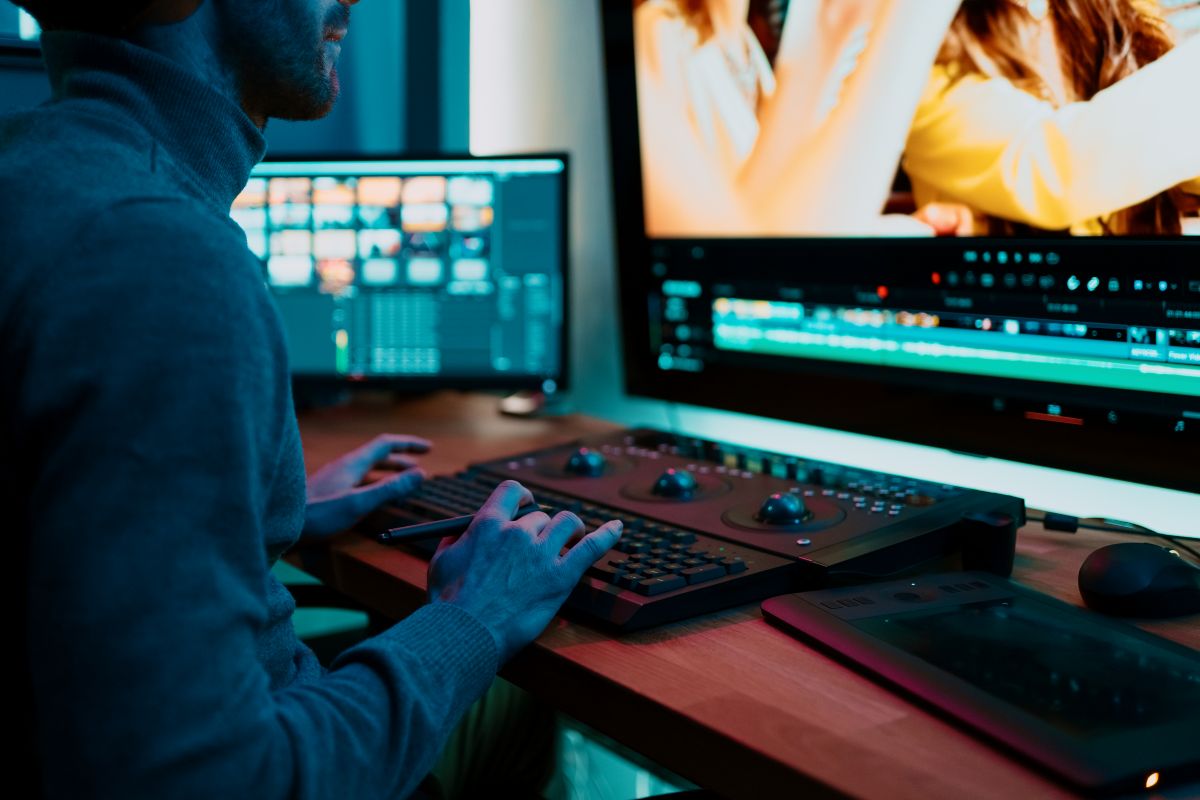
How a Videos Company Integrates Graphics and Motion in Factual Content
Factual video productions combine real-world footage, data, and archival materials that must coexist in a coherent, understandable form. The integration of graphics, titles, and motion design plays a vital role in guiding the audience through complex information, highlighting important developments, and maintaining continuity across diverse sources. Audiences are discerning and accustomed to high-quality content, making clarity and authenticity essential. For a videos company, carefully aligning visual elements with the narrative allows detailed information to be communicated effectively while preserving the integrity of the story. From layered graphics that direct attention, to animated data that evolves alongside the narrative, thoughtful visual design ensures that factual content is both informative and structured. Let’s take a closer look at how these visual strategies are applied and why they play such a significant role in factual productions.
Establishing Visual Hierarchy with Graphic Layers
Creating a clear visual hierarchy is essential in factual video content where multiple sources of information must coexist. Layered graphics, including maps, data overlays, and archival imagery, help direct viewer attention and emphasise key points without overwhelming the scene.
- Colour contrast separates primary information from secondary elements.
- Depth and layering create spatial relationships that make complex visuals easier to interpret.
- Motion cues such as subtle animated transitions or directional movement guide the viewer through timelines and correlations.
By combining these techniques, a videos company can ensure that audiences are able to follow detailed content naturally, understanding both the narrative progression and the significance of individual elements.
Designing Title Sequences that Set Documentary Tone
Title sequences establish the tone and authority of factual productions. They provide the first impression of a video’s style and help the audience interpret the content that follows.
- Typography should reflect the subject matter and tone, whether formal, neutral, or technical.
- Animation style can range from subtle motion to dynamic sequences depending on the type of content.
- Timing and pacing must align with the narrative rhythm to ensure titles complement rather than distract.
When executed thoughtfully, title sequences convey credibility and context, providing viewers with a clear sense of the video’s purpose and reinforcing the production’s professionalism.
Integrating Motion Graphics with Verité Footage
Combining motion graphics with real-world footage requires precision to maintain authenticity. Graphics should support comprehension without drawing undue attention away from the filmed content.
- Motion tracking ensures graphics align accurately with moving elements.
- Lighting and shadow matching integrates graphics seamlessly into the scene.
- Subtlety in animation keeps the focus on the content rather than the effect.
Through careful integration, a videos company can enhance the clarity of complex information while preserving the natural feel of verité footage, making the narrative easier to follow and visually coherent.
Data Visualisation as Narrative Device
Data is a critical component in many factual productions, and its presentation can influence understanding. Animated visualisations can form part of the narrative rather than serve as isolated explanations.
- Clarity ensures information is presented in an accessible manner.
- Context connects data to the narrative or subject matter for relevance.
- Engagement uses motion to illustrate trends, relationships, or changes over time.
By animating data in ways that align with the story, a videos company can help viewers interpret complex information intuitively, making facts more comprehensible without compromising accuracy.
Balancing Informational Graphics and Emotional Storytelling
Even in highly factual content, human interest and emotional resonance are essential to retain engagement. Graphics must support emotional storytelling without detracting from the information presented. Techniques such as selective desaturation, moderated animation speeds, and rhythm-aligned motion allow graphics to integrate with the emotional arc of the narrative. For instance, in a documentary exploring environmental changes, animated overlays can illustrate data on deforestation or climate trends while keeping the human or ecological element in focus. By synchronising graphic interventions with the narrative, a videos company ensures that audiences retain both understanding and empathy.
Building Visual Continuity Across Graphic Elements
Consistency across graphics strengthens viewer trust and reinforces professional presentation. Colour palettes, typography, and motion curves should remain uniform across lower thirds, maps, captions, and overlays. This visual continuity allows audiences to recognise patterns, differentiate between information types, and maintain orientation across a sequence. In productions with multiple data sources or archival footage, a consistent design framework prevents confusion and helps viewers follow complex narratives smoothly.
Using Kinetic Typography to Emphasise Key Facts
Kinetic typography allows key points to emerge naturally within a narrative, emphasising facts without overwhelming the audience.
- Timing aligns text animations with voiceover or narrative beats.
- Emphasis employs movement, size, or colour to highlight important words.
- Rhythm matches the pace of animation to the content’s flow for consistency.
When applied thoughtfully, kinetic typography ensures that significant details are highlighted in a controlled manner, reinforcing comprehension and supporting the overall clarity of the video produced.
Integrating Archival Sources Through Graphic Treatment
Factual productions often require the integration of archival footage, photographs, and historical documents. Motion design can bridge disparate materials, creating a cohesive visual presentation. Animated reveals, parallax effects, and subtle colour correction help align archival assets with contemporary footage. Contextualised graphics can clarify dates, locations, or relevance without altering the integrity of the original source. A professional videos company ensures that all elements, new and historical, coexist naturally to maintain narrative coherence and accuracy.
Designing for Multi-Platform Factual Content
Content increasingly reaches audiences across varied platforms, including broadcast, streaming, and mobile formats. Motion and graphic design must adapt to different aspect ratios, safe zones, and viewing conditions. Text legibility, animation pacing, and layout scaling are carefully considered to retain the informational value across formats. Interactivity or engagement cues can be integrated for digital and social distribution, while traditional screen-safe layouts maintain clarity on larger displays. An experienced videos company brings a professional approach, ensuring that factual content remains accurate and readable wherever it is consumed.
Motion Design as Temporal Navigation
Motion design can serve as a guide through temporal and spatial transitions. Animated timelines, dynamic transitions, and visual metaphors help audiences follow shifts in chronology, location, or thematic focus. For example, in a historical documentary, a timeline may illustrate decades of change while overlays contextualise individual events. Visual motion can communicate the progression of time more intuitively than static graphics, assisting viewers in maintaining orientation through complex narratives.
Integrating Visual Elements for Effective Communication
The integration of graphics, titles, and motion design in factual video content is more than a technical consideration; it is central to how audiences interpret and retain information. Thoughtful design decisions guide viewers through complex narratives, emphasise important details, and create coherence across multiple layers of information. By carefully balancing visual hierarchy, animated data, kinetic typography, and continuity across elements, a videos company ensures that factual content is both comprehensible and engaging without compromising authenticity.
In professional productions, the combination of these visual strategies supports clear communication, reinforces credibility, and allows intricate information to be absorbed naturally. Each design choice, from subtle motion cues to title sequencing, plays a role in shaping how viewers experience and understand the narrative. Recognising the interplay between visual and narrative elements highlights why strategic integration is essential in factual storytelling, ensuring that information is presented with clarity, structure, and authority.
A factual video benefits from careful integration of graphics, titles, and motion to guide viewers through information. Sound Idea Digital can help plan this integration for your content. Get in touch to discuss your next video.
We are a full-service Web Development and Content Production Agency in Gauteng specialising in Video Production, Animation, eLearning Content Development, Learning Management Systems, and Content Production.
Contact us for a quote. | enquiries@soundidea.co.za | https://www.soundideavideoproduction.co.za| +27 82 491 5824 |

